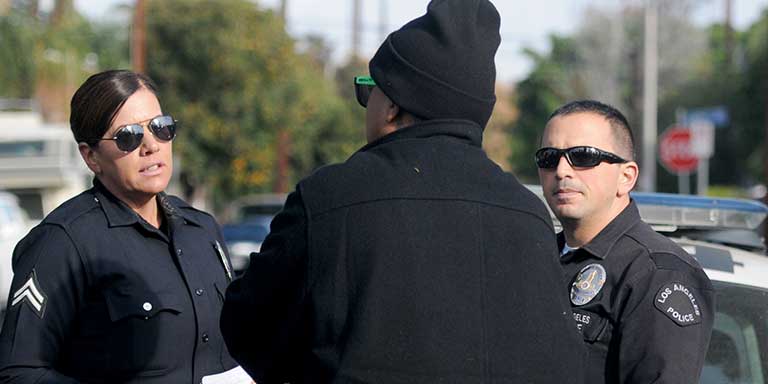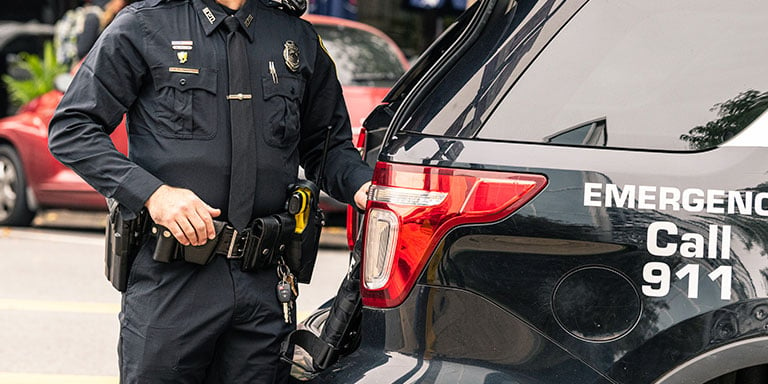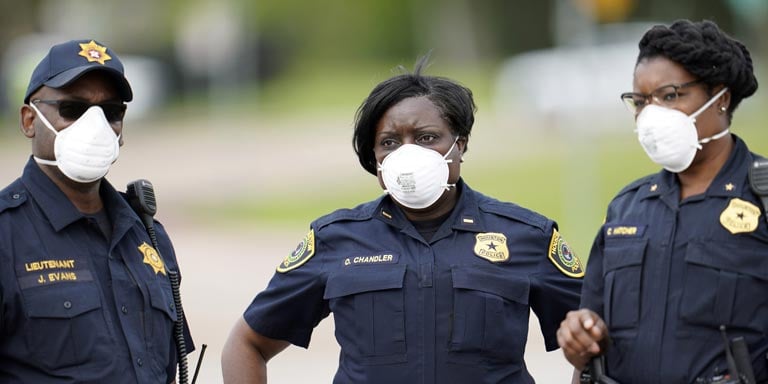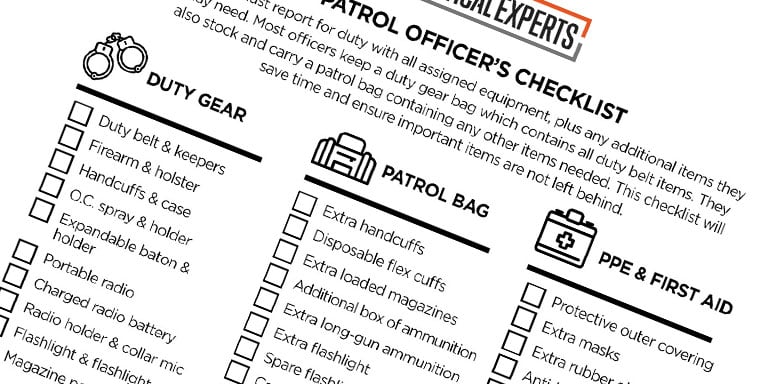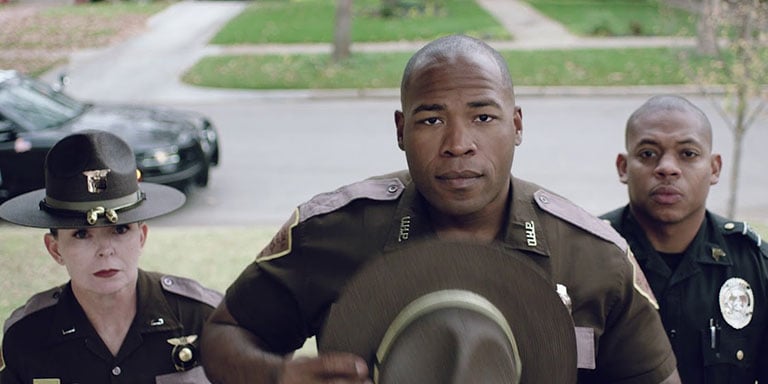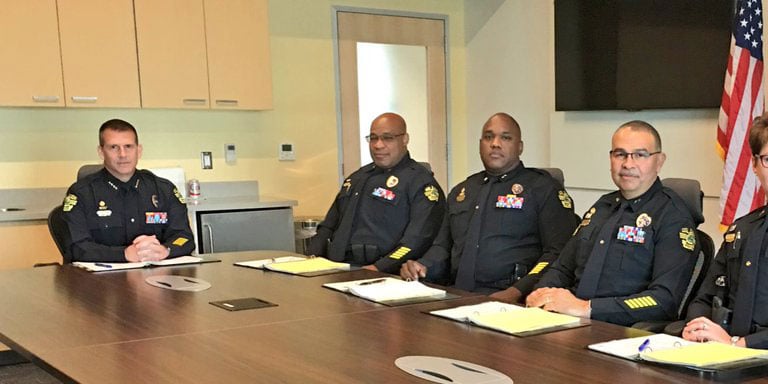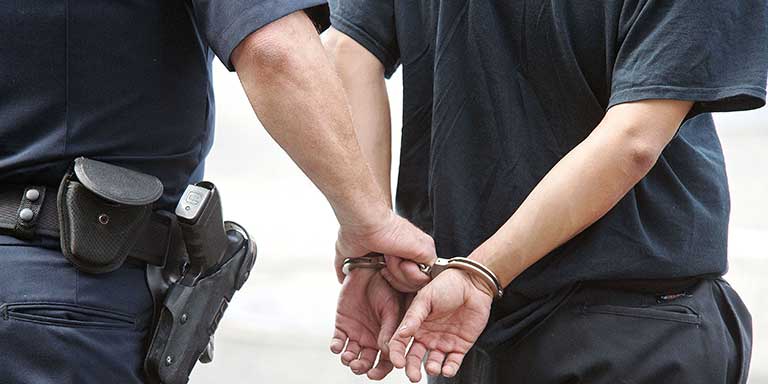
Handcuffs are defined as any temporary restraint device used by law enforcement officers to restrict and control a subject's hands and arms. When properly used, they provide increased officer safety and security. Handcuffs should only be utilized in accordance with applicable department policies.
Types of Handcuffs
Chain Handcuffs
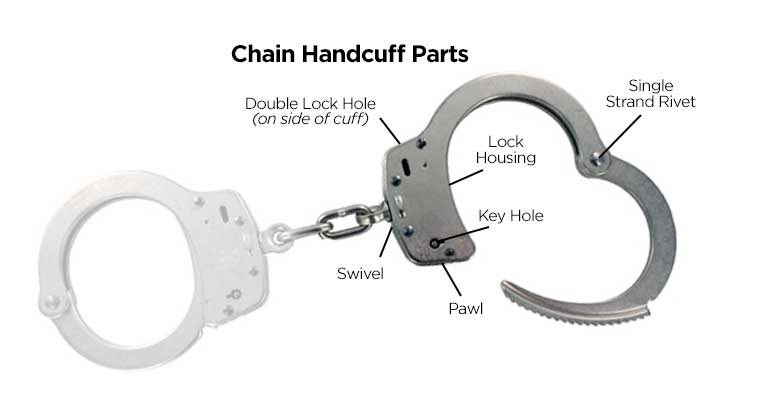
Chain handcuffs get their name from the chainlinks that attach one cuff to the other. Learning the components of chain handcuffs will help officers to better understand how they function, as well as the best practices for using them when arresting suspects.
Swivels:
Each end of the chain is attached to the handcuff by a swivel. This allows the cuffs to rotate without the chain becoming bound or entangled.
The keyhole:
The keyhole is commonly located in the middle of the body of each cuff. Once the key is properly inserted, it has to be rotated in one direction to disengage the double locking mechanism, and then rotated in the other direction to unlock the cuff.
The double lock hole:
This is a small hole in the side of each cuff. In the center is a plunger-type lever that, when depressed, double locks the cuff. It is activated by using the pointed end of the handcuff key to depress the round center about a quarter of an inch.
Double locking each handcuff is both required and essential. If the officer does not double lock the handcuffs, they will be much easier to pick. By double locking handcuffs, the ratcheting mechanism is locked so it cannot travel in either direction. Failure to double lock a cuff allows it to click tighter and tighter against the subject's wrists as they move around, possibly compromising the subject's circulation.
The single and double strand:
The single strand is the main moving part of a pair of handcuffs. It is the single piece of curved steel with fixed teeth along the outer edge. The strand rotates 360 degrees around and through the double-strand side, pivoting on the strand rivet.
The pawl:
When closed, the fixed teeth of the single strand engage with other ratcheting teeth on a small mechanism called the pawl. The pawl is under tension to stay engaged. Using the handcuff key causes the pawl to retract, releasing the single strand and allowing the handcuffs to open.
Hinged Handcuffs

Hinged handcuffs are named for the series of hinges that attach the two cuffs together. This hinge configuration reduces the subject's mobility. Most hinged cuffs parts are the same as chain cuffs, with one important exception.
The hinge:
As their name implies, hinged handcuffs utilize hinges instead of chains. The hinge may consist of two, three or more links of metal hinge material. Unlike chain handcuffs, hinge handcuffs allow the cuffs to bend but not twist. The proper use of hinged handcuffs will greatly reduce the mobility of a handcuffed subject.
Leg Shackles
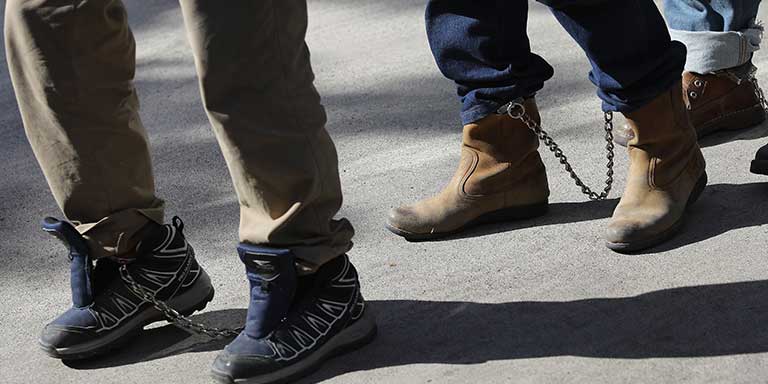
Leg shackles are used to secure a subject at the ankles, allowing them to walk while restricting their ability to run. They are very similar to handcuffs, except that the single and double strands are much larger to accommodate the subject's ankles. Leg shackles are often used during prisoner transport of multiple inmates, or when a subject is a flight risk or prone to potentially violent kicking.
Disposable Flex Handcuffs
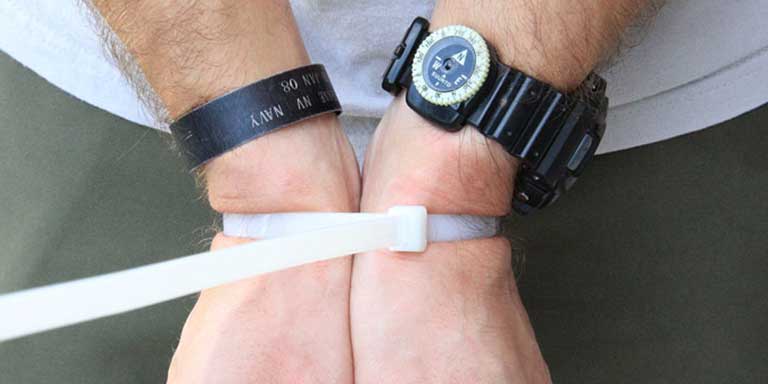
These single-use disposable restraint systems are generally only deployed when multiple arrests are likely. They are lightweight, easy to carry, easy to deploy and because they are designed for a single-use, there is no need to worry about recovering the cuffs. Most of the time, disposable flex handcuffs have to be cut off, but a few models can be opened with a key.
Experts Video
In this short video, Michael from ASP covers everything you need to know about choosing your next pair of handcuffs. ASP is an industry leading manufacturer of expandable batons, restraints and other police gear For more than forty years, ASP has had a single-minded focus on providing law enforcement officers with the finest tools for the safe performance of their duties, and industry-leading training in the use of those tools. Shop ASP
Proper Fit
Like other pieces of police equipment, there is a right and a wrong way to handcuff. Handcuffs must be secured in a manner tight enough to secure the subject, yet not so tight as to cut off circulation or cause injury. If a handcuff is placed too loosely, the subject may slip their hands out of them. A good rule of thumb is to allow enough space to get a fingertip between the wrist and the cuff. If the handcuffs are too tight, loosen them before double locking them.
Positioning an Individual for Handcuffing

With a few exceptions, handcuffs should secure the individual's hands behind their back. When properly applied, the backs of the hands should be facing in, both palms should be facing out and the keyholes should face out.
The officer starts by positioning themselves standing behind the subject. They will instruct the suspect to place their right hand behind their back. The officer then presses the single strand of the handcuff against the subject's wrist. The single strand travels 360 degrees through the double-strand and locks around the wrist of the subject. The chain (or hinge) of the handcuffs should be on the back of the subject's hand.
The next instruction is for the subject to place their left hand behind their back. The officer then secures the left wrist using the same technique. Once properly fit, both handcuffs must be double locked. A search incident to arrest should be conducted after the subject is handcuffed.
Reasons for Handcuff Use
Custodial Arrest: A person is handcuffed when they are arrested just before they are placed in a police vehicle or transported to another location for processing.
Protection against self-injury: There are times when a police officer is called to a medical emergency to handle a person deemed dangerous because of a mental disability a mental disability or violent drug reaction. Police may be required to secure a person in handcuffs in order for them to be transported and treated at a medical facility. This is used only on an emergency basis until the person may be properly secured by ambulance or hospital staff.
Taken into protective custody: Persons who are not under arrest but must be taken into protective custody may be handcuffed. This is the case in some investigative detentions, subject to departmental policy and case law restraints.
Following departmental policies and completing proper documentation: In cases where an individual is restrained by handcuffing, proper documentation should be completed and departmental policy should be followed. This is particularly important in cases where the subject is not under arrest but must be secured for their safety or the safety of others.
Levels of Citizen Compliance
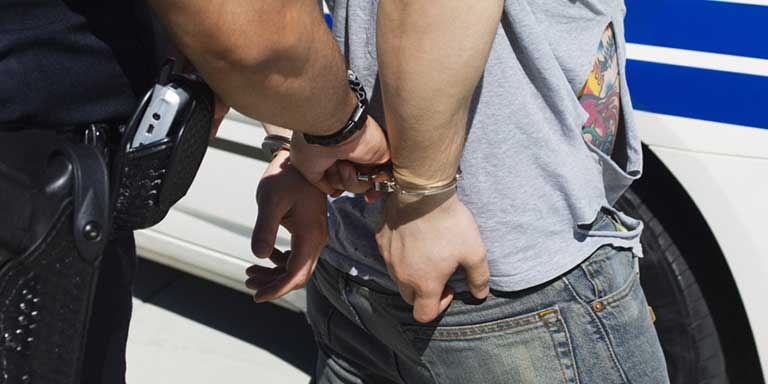
Suspects under arrest react to being handcuffed with differing levels of compliance. It is important to understand these possible reactions and stay prepared for any and all of them. Always be ready to resort to de-escalation techniques as the situation warrants.
Compliant: The citizen follows the officer's instructions and offers no resistance.
Passive resistance: The citizen does not follow instructions, becomes argumentative, and may lock arms at their sides, making handcuffing more difficult.
Active resistance: The citizen struggles against the officer's attempt to handcuff them or physically tries to escape from custody.
In all cases, the officer should follow their department's policy while using only the minimum amount of force necessary to overcome any resistance.
Special Circumstances
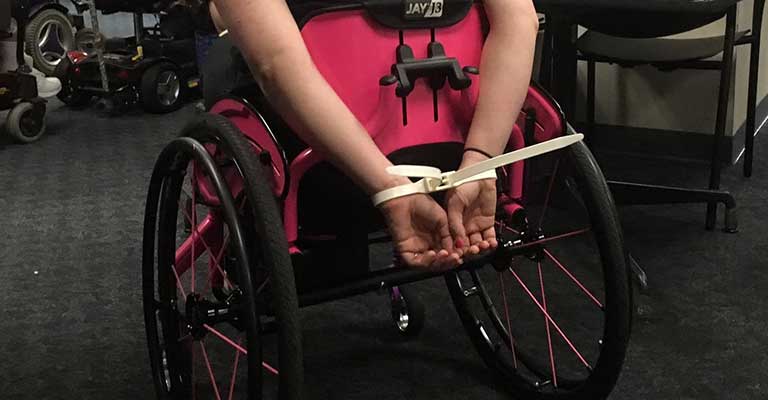
Physically Disabled or Injured Suspects
A person with a physical disability or injury may require special handling. In some cases, they are handcuffed in front and not behind their back. Some people, due to their significant size or lack of physical dexterity, may require two pairs of handcuffs hooked together to secure their hands behind their backs. Every case is different and it is the officer's responsibility to weigh the level of security needed against the individual's physical limitations.
Children and Teens
Most departments or jurisdictions have set policies on the age at which a child can be handcuffed. Some jurisdictions make the distinction between a child aged twelve or less and a teenager thirteen to seventeen. Most police are given discretion in handcuffing teenagers depending on the circumstances and seriousness of the offense.
Suspects with Phobias
Phobias must be taken into consideration during the handcuffing process. These are quite serious to the persons afflicted with them. Most people with phobias will tell the officer at the time of the arrest.
With regard to being handcuffed, some persons suffer from merinthophobia, or the fear of being restrained. If they aren't given the proper attention, they may suffer extreme anxiety or panic attacks. This could also trigger an irrational fight or flight response. After a thorough search, cuffing an afflicted individual in front may be one solution.
A second related phobia is claustrophobia, which is a fear of tight spaces. This is usually triggered by a situation where an individual is confined to a tight space, like the back of a police car. It is up to the officer to take their mental state and fear into consideration. One reasonable accommodation may be to transport the subject in a larger vehicle, such as a prisoner transport van.
Handcuffs, when properly applied, are effective for temporarily restraining those who must be lawfully restrained. Placing handcuffs on an individual is both a necessity and a responsibility. Learning when and how to properly handcuff individuals is essential for every police officer. Police department policies differ, and it is important that each officer knows and understands their particular agency's policies regarding handcuffing. Once the handcuffs go on, the officer takes responsibility for the safe transport and well-being of the restrained subject.
Did you find this article helpful?


